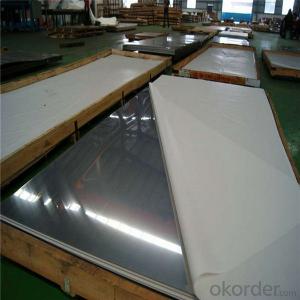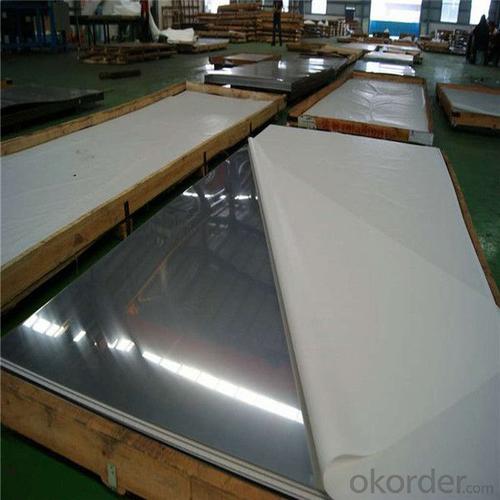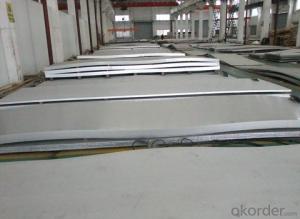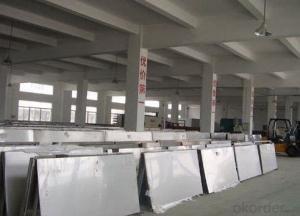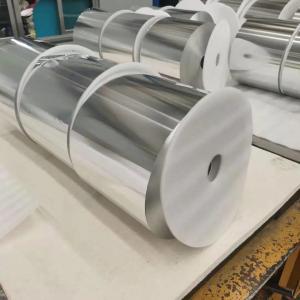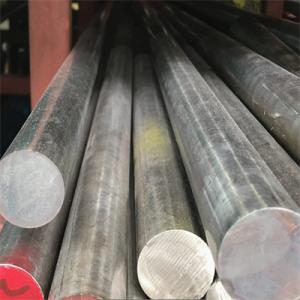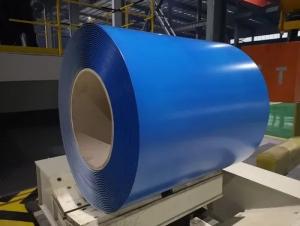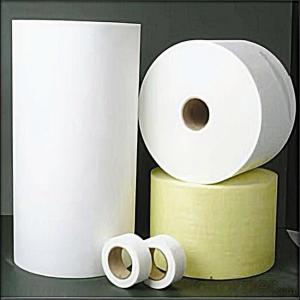Raw Stainless Steel Sheets - ASME 420 430 426 Grade
- Loading Port:
- Shanghai
- Payment Terms:
- TT OR LC
- Min Order Qty:
- 3 m.t.
- Supply Capability:
- 25000 m.t./month
OKorder Service Pledge
OKorder Financial Service
You Might Also Like
Specification
Product Description
AISI 304( 18Cr-8Ni ) stainless steel is one of Austenitic stainless steel.
As a versatile steel, it has good corrosion resistance, heat resistance, low temperature strength
and mechanical properties. Meanwhile, it is quite good in pressing, bending and other thermal
processing.
Standard: ASTM A240 / A240M
Grade: 304 / 304L / 316 / 316L / 321 / 310S / 309S / 409 / 426 / 420 / 430 / 201...
Size: 1000*2000mm, 1220*2440mm, 1250*2500mm, 1500*3000/6000mm, 2000*6000mm
Special size can customized
Thickness: 0.3-20mm
Brand: TISCO, ZPSS, JISCO, BAO STEEL, LISCO
Surface: 2B, 2BA, BA, 1D, NO.1, NO.4, HL, Mirror, 8K
Chemical Composition
C | Cr | Ni | Mn | P | S | Mo | Si | |
304 | ≤0.07 | 17.00-19.00 | 8.00-10.00 | ≤2.00 | ≤0.035 | ≤0.030 | - | ≤1.00 |
304L | ≤0.030 | 18.00-20.00 | 8.00-10.00 | ≤2.00 | ≤0.035 | ≤0.030 | - | ≤1.00 |
316L | ≤0.030 | 16.00-18.00 | 12.00-15.00 | ≤2.00 | ≤0.035 | ≤0.030 | 2.00-3.00 | ≤1.00 |
317 | ≤0.12 | 18.00-20.00 | 11.00-15.00 | ≤2.00 | ≤0.035 | ≤0.030 | 3.00-4.00 | ≤1.00 |
317L | ≤0.08 | 18.00-20.00 | 11.00-15.00 | ≤2.00 | ≤0.035 | ≤0.030 | 3.00-4.00 | ≤1.00 |
309S | ≤0.08 | 22.00-24.00 | 12.00-15.00 | ≤2.00 | ≤0.035 | ≤0.030 | - | ≤1.00 |
310S | ≤0.08 | 24.00-26.00 | 19.00-22.00 | ≤2.00 | ≤0.035 | ≤0.030 | - | ≤1.00 |
Packaging & Shipping
Packaging way of stainless steel: Original packaging according to your needs. Standard export sea-worthy wooden packing.
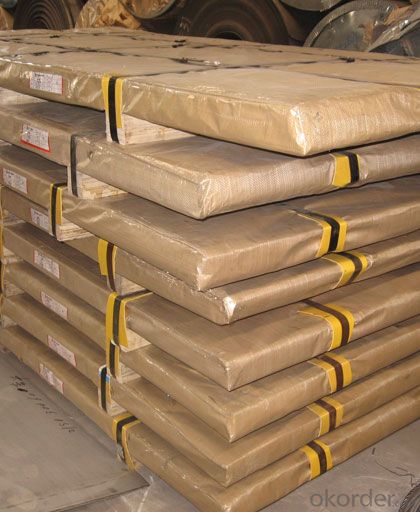
Our Services
1.All product are made of high-quality stainless steel sheet;
2.We have good service & short delivery time;
3.We have professional export team;
4.We can provide sample for your evaluation;
5.We can provide Mill test certificate;
6.Your enquiry will get quickly and efficient response.
- Q:Can stainless steel sheets be used for food preparation surfaces?
- Food preparation surfaces can indeed utilize stainless steel sheets. The reason behind stainless steel's popularity for such surfaces is its remarkable characteristics. Being non-porous, it avoids the absorption of any liquids or bacteria that can contaminate the food. Moreover, stainless steel exhibits resistance to corrosion, staining, and rusting, thereby ensuring its durability and longevity for food preparation surfaces. Furthermore, stainless steel can be easily cleaned due to its ability to withstand high temperatures and resistance to most cleaning agents. This fact makes it a hygienic option for food preparation surfaces, as it allows for thorough sanitization to prevent bacterial growth. In conclusion, stainless steel sheets provide a secure and practical alternative for food preparation surfaces.
- Q:How do you prevent scratching on stainless steel sheets during handling and installation?
- To prevent scratching on stainless steel sheets during handling and installation, there are several steps you can take: 1. Use protective covering: Apply a protective covering or film on the surface of the stainless steel sheets before handling or installing them. This covering acts as a barrier, preventing scratches and scuff marks during transportation and installation. Ensure that the covering is suitable for stainless steel and does not leave any residue upon removal. 2. Handle with care: Be mindful of how you handle the stainless steel sheets. Avoid dragging or sliding them against rough surfaces or each other, as this can cause scratches. Instead, use proper lifting techniques and handle the sheets with clean, dry hands or gloves to minimize the risk of leaving marks. 3. Use appropriate tools: When working with stainless steel sheets, make sure to use tools that are specifically designed for this purpose. Avoid using tools with rough or abrasive surfaces that could scratch the stainless steel. Opt for tools made from soft materials or with protective coatings to minimize the chances of damaging the surface. 4. Clean work areas: Before installing stainless steel sheets, ensure that the work area is clean and free from any debris or particles that could potentially scratch the surface. Wipe down the area with a clean cloth or soft brush to remove any dirt, dust, or loose materials that could cause scratches during installation. 5. Secure sheets during transportation: If you need to transport stainless steel sheets, ensure that they are properly secured to prevent any movement or shifting that could lead to scratches. Use appropriate packaging materials such as foam inserts, edge protectors, or straps to keep the sheets in place and minimize the risk of damage. By following these preventive measures, you can significantly reduce the risk of scratching stainless steel sheets during handling and installation, ensuring a pristine finish and maintaining the quality of the material.
- Q:How about stainless steel grades?
- According to the composition can be divided into Cr (400 Series), Cr Ni system (300 Series), Cr Mn Ni (200 Series) and the precipitation hardening systems (Series 600). 200 series - chromium nickel manganese austenitic stainless steel 300 series - chromium nickel austenitic stainless steel 301 - ductility, used for molding products. It can also be hardened rapidly by mechanical processing. Good weldability. The abrasion resistance and fatigue strength are better than 304 stainless steel. 302 - 304 with corrosion resistance, due to the relatively high carbon intensity. 303 - by adding a small amount of sulfur and phosphorus, it is easier to cut than 304.
- Q:What are the common manufacturing standards for stainless steel sheets?
- There are several common manufacturing standards for stainless steel sheets that ensure their quality and consistency. One of the most widely recognized standards is the ASTM International (formerly known as the American Society for Testing and Materials) standard. ASTM A240 is the specific standard for stainless steel sheets, which specifies the requirements for chemical composition, mechanical properties, and other relevant characteristics of the material. Another important manufacturing standard is the EN (European Norm) standard, specifically EN 10088, which provides guidelines for stainless steel flat products, including sheets. This standard covers various aspects such as dimensions, tolerances, surface finishes, and more. Additionally, there are national standards developed by different countries. For example, in Japan, the Japanese Industrial Standards (JIS) classify stainless steel sheets under various specifications such as JIS G4304 and JIS G4305. These standards define the requirements for chemical composition, mechanical properties, and surface finishes of stainless steel sheets. In the United States, the American Iron and Steel Institute (AISI) also sets standards for stainless steel sheets. The AISI 300 and 400 series are commonly used in the manufacturing of stainless steel sheets, and their properties are defined by the AISI. It is important for manufacturers and suppliers to adhere to these standards to ensure that the stainless steel sheets meet the desired quality requirements and can be used reliably in various applications. These standards help maintain consistency, compatibility, and traceability in the production and use of stainless steel sheets across different industries.
- Q:How are stainless steel sheets manufactured?
- Stainless steel sheets are typically manufactured through a process called hot rolling. First, raw stainless steel blocks are heated in a furnace until they reach a specific temperature. Then, they are passed through a series of rollers that apply pressure to the blocks, gradually reducing their thickness. This process elongates the metal and creates sheets of stainless steel with the desired dimensions. After hot rolling, the sheets undergo annealing, a heat treatment process that enhances their strength and corrosion resistance. Finally, the sheets are cut into the desired size and undergo further processing, such as surface finishing or coating, depending on their intended use.
- Q:Are stainless steel sheets suitable for aerospace applications?
- Yes, stainless steel sheets are suitable for aerospace applications. Stainless steel is a versatile and durable material that offers excellent strength-to-weight ratio, corrosion resistance, and high-temperature resistance, making it ideal for use in the aerospace industry. It is commonly used in the construction of aircraft structures, engine components, and fuel systems due to its ability to withstand extreme conditions and maintain structural integrity. Stainless steel sheets are also easy to form, weld, and fabricate, allowing for customization and precise engineering in aerospace applications. Additionally, stainless steel's resistance to fatigue and erosion makes it a reliable choice for aerospace components that are subject to constant stress and harsh environments. Overall, stainless steel sheets provide the necessary characteristics to meet the demanding requirements of the aerospace industry, making them a suitable choice for various applications.
- Q:Can stainless steel sheets be used for pressure vessels?
- Indeed, pressure vessels can utilize stainless steel sheets. Renowned for its exceptional resistance to corrosion, stainless steel stands as an optimal material for pressure vessels that face severe conditions or corrosive substances. Moreover, it possesses remarkable strength and favorable mechanical properties, enabling it to endure the internal pressure exerted by the fluid or gas within the vessel. Furthermore, the malleability and weldability of stainless steel sheets facilitate the creation of pressure vessels in the desired shape and size. Consequently, stainless steel sheets emerge as a prevalent selection for pressure vessels across diverse industries, including oil and gas, chemical processing, and pharmaceuticals.
- Q:What are the benefits of using diamond plate stainless steel sheets?
- Using diamond plate stainless steel sheets offers numerous advantages. Firstly, these sheets are highly durable and resistant to corrosion. Stainless steel is well-known for its strength and ability to withstand harsh environments, making it an ideal option for various uses. The diamond plate pattern further enhances the sheets' durability, providing additional strength and traction. Secondly, diamond plate stainless steel sheets possess a distinctive aesthetic appeal. The diamond pattern not only adds a visually pleasing texture but also helps conceal scratches and dents, resulting in cleaner and more pristine sheets. Consequently, they are a popular choice for architectural and decorative purposes. Moreover, diamond plate stainless steel sheets are effortless to clean and maintain. The smooth stainless steel surface allows for easy cleaning, while the diamond pattern reduces the visibility of dirt and grime. This makes them suitable for environments requiring frequent cleaning, such as commercial kitchens or industrial facilities. Furthermore, these sheets offer exceptional slip resistance. The raised diamond pattern provides traction, minimizing the risk of slips and falls. Consequently, they are particularly valuable in areas prioritizing safety, such as ramps, stairs, or walkways. Overall, diamond plate stainless steel sheets provide durability, corrosion resistance, aesthetic appeal, easy maintenance, and slip resistance. These qualities make them a versatile option for a wide range of applications, including industrial settings and architectural designs.
- Q:What's the price of 06cr19ni10 and 304 stainless steel?
- The term "304 stainless steel" comes from the United states. Many people think that "304 stainless steel" is a type of Japanese name, but in strict sense, Japan's 304 stainless steel formal name is "SUS304"". The common marking methods in the market are 06Cr19Ni10304, SUS304, three kinds, in which 06Cr19Ni10 generally means GB standard production, and 304 generally means ASTM standard production, SUS304 mark day standard production.
- Q:Are stainless steel sheets resistant to fire?
- Yes, stainless steel sheets are highly resistant to fire. Stainless steel is a type of metal alloy that contains a high percentage of chromium, which forms a protective layer of chromium oxide on the surface when exposed to air or moisture. This chromium oxide layer acts as a barrier, preventing oxygen from reaching the underlying metal and thus making stainless steel highly resistant to corrosion and fire. Stainless steel sheets have a melting point of around 2750°F (1510°C), which is significantly higher than the temperatures typically encountered in most fire scenarios. This means that stainless steel can withstand intense heat for a prolonged period without deforming or losing its structural integrity. Furthermore, stainless steel is non-combustible and does not contribute to the spread of flames. It does not release harmful gases or toxic fumes when exposed to fire, making it a safe material for use in various applications where fire resistance is crucial, such as in building construction, industrial equipment, and transportation. Due to these properties, stainless steel sheets are widely used in fire-rated structures, including fire doors, fire-rated walls, and fire-resistant enclosures. They provide an effective barrier against the heat and flames, helping to contain the fire and protect the surrounding areas. However, it is important to note that while stainless steel is highly resistant to fire, it can still be affected by extremely high temperatures or prolonged exposure to fire. In such cases, the material may experience some degree of distortion or damage. Therefore, it is essential to consider the specific fire rating requirements and consult with experts to ensure the appropriate selection and installation of stainless steel sheets in fire-resistant applications.
1. Manufacturer Overview |
|
|---|---|
| Location | |
| Year Established | |
| Annual Output Value | |
| Main Markets | |
| Company Certifications | |
2. Manufacturer Certificates |
|
|---|---|
| a) Certification Name | |
| Range | |
| Reference | |
| Validity Period | |
3. Manufacturer Capability |
|
|---|---|
| a)Trade Capacity | |
| Nearest Port | |
| Export Percentage | |
| No.of Employees in Trade Department | |
| Language Spoken: | |
| b)Factory Information | |
| Factory Size: | |
| No. of Production Lines | |
| Contract Manufacturing | |
| Product Price Range | |
Send your message to us
Raw Stainless Steel Sheets - ASME 420 430 426 Grade
- Loading Port:
- Shanghai
- Payment Terms:
- TT OR LC
- Min Order Qty:
- 3 m.t.
- Supply Capability:
- 25000 m.t./month
OKorder Service Pledge
OKorder Financial Service
Similar products
New products
Hot products
Hot Searches
Related keywords
